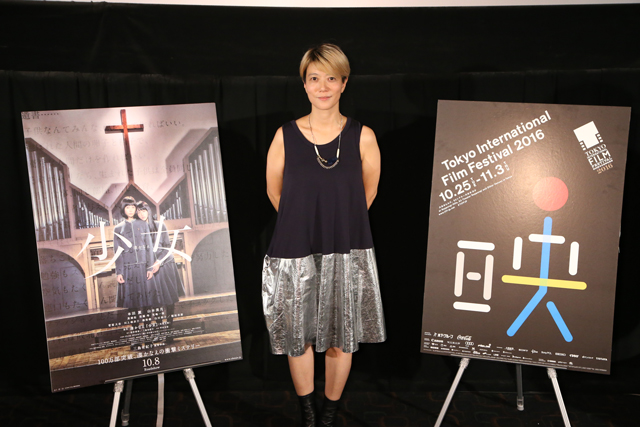
Coming of age in Japan is a brutal experience in Night’s Tightrope, Yukiko Mishima’s Japan Now film about two high school girls who try to find their way in a Darwinian world of abusive classmates, duplicitous teachers, and perverted or negligent parents. Atsuko is relentlessly bullied by classmates at a religious high school. She feigns a limp suffered from a kendo injury as a child, even though her leg has long since recovered. She is able to cope with the support of her best friend and aspiring novelist Yuki, who secretly chronicles her suffering friend’s plight in a novella. But when Yuki’s manuscript is stolen and plagiarized by her teacher, she grows irritable toward Atsuko, while Atsuko becomes distrustful of her only friend. As the two close off and drift apart, they pursue unstable paths.
Night’s Tightrope is based on a novel by Kanae Minato, whose Confessions and The World of Kanako each explored the torment that high school kids and their teachers inflict upon one another in graphic, disturbing ways. Both books were adapted into films with a glossy style and increasingly frenetic pace, and director Mishima (A Stitch of Life) here adapts Minato’s latest story, Shojo (Girls), with her own brand of verve and technical panache.
Mishima answered questions about her stylistic decisions in adapting the novel during a post-screening Q&A on October 27. Her decision to open the film with a theatrical ceremony arose from her interpretation of the novel’s opening lines: “The novel begins with the last words of a girl, but we don’t know yet who this girl is. Rather than limit these words to a single girl, I interpreted them as a collective cry for help from the various girls in the story and came up with this sort of religious theatre atmosphere. A film like this would probably begin with a montage of the girls’ school life, but I was looking for a gut punch.”
The striking theatricality of the opening focuses on the subject of eugenics, as the girls – speaking directly into the camera while positioned under a darkened proscenium – talk of terminating the weak before birth or persecuting them after it.
Ceremony plays a large role in the film, as one of the most bravura sequences demonstrates. Mishima intercuts the scene in which Yuki discovers her manuscript has been stolen with an elaborate maypole dance with Yuki and several of her classmates. “This wasn’t in the novel either,” said the director. “The girls are like birds in a cage, and they need to constantly be aware of their surroundings in order to survive. I was thinking of how to represent this in a way other than words. I found that many high school girls are required to do a maypole dance for physical education. It needs to be very organized; otherwise, the ribbons won’t all be beautifully tied together. I thought this dance captured the psychological state of the girls in this film.”
While maypole dances might look beautiful, said Mishima, they are actually agonizing when performed. “Yuki is a character who doesn’t talk and goes at her own pace. Once her manuscript is stolen, I wanted to show her state of mind as she loses everything she has.”
Other metaphors include the aptly used motif of water, which illustrates the characters’ flailing in the dark, particularly in ethereal, slow-motion scenes of girls plunging deep into bodies of water. The film’s sound design – both in the classical score and the myriad jarring ways it is cut off with screams, blunt sounds or just plain silence – also frequently draws attention to and amplifies the characters’ fragile states of mind.
Mishima was keenly aware of her characters’ states of mind throughout, likely an effect of her speaking with many high school girls while preparing for the film. “While reading the novel, I thought the story was a reflection of how we have tried to turn our backs on death. I talked with maybe 30 girls and found that many spoke of death lightly. If somebody bothers them, they say that person should die. Or if they face some trouble, they quite lightly say they themselves want to die. This casual approach towards death is something that I think is continuing today.”
As the conversation turned increasingly philosophical, with references to Shuji Terayama and even Nietzsche, Mishima remarked, “Yuki and Atsuko are looking into their own darkness and seeing their own lives, but also their own deaths. This tightrope – they feel this every day.”
The film doesn’t end on such an unbearable note, however. Circumstances have lead the two to a preoccupation with death – Atsuko begins working at a nursing home for the elderly, Yuki at a place for terminally ill children. As they attempt to help those in need, they also come to terms with their own demons and the value of their friendship. Mishima emphasized that the “running” the girls experience is also life-affirming: “They might feel dead in their everyday lives, but they feel alive perhaps only when they can sprint somewhere together.”
Night’s Tightrope is currently playing in select theatres around Japan. “It’s a movie that not many people have heard of,” said Mishima, “so if you could spread the word even a little, I would really appreciate it.”